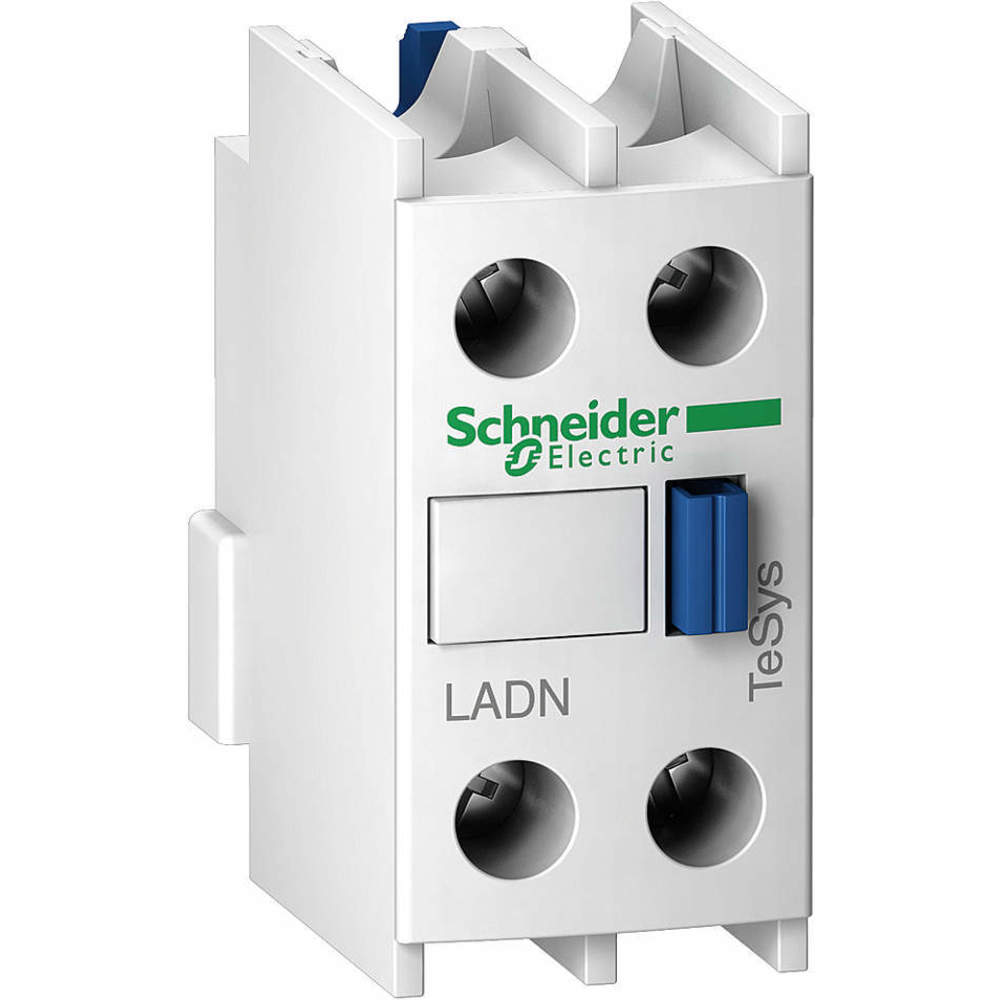Schneider Electric LADN11 IEC auxiliary contact provides additional control or signalling functions, such as indicating the status of the main contacts (open / closed), enabling remote operation or monitoring or facilitating interlocking between different components of a system. It is useful in the manufacturing, automation and power distribution industries.
Features:
- Schneider Electric LADN11 IEC auxiliary contact features an auxiliary contact block designed for use with TeSys range products.
- It has 1 normally open (NO) and 1 normally closed (NC) pole contact composition and offers instantaneous contact operation.
- This auxiliary contact has screw clamp terminals for easy and secure connections.
- It offers protection against environmental factors with an IP20 degree of protection.
- This Schneider Electric auxiliary contact further features a non-overlap time of 1.5 ms on de-energisation and energisation, preventing overlap between NC and NO contacts.
Frequently Asked Questions:
Q. What is the operational temperature range of this auxiliary contact?
A. It has an operational temperature range of -5 to 60 degrees C.
Q. How to install this Schneider Electric auxiliary contact?
A.
- Locate the LA auxiliary contact block's release lever and spring.
- Using cutting pliers or a similar tool, cut approximately 3/16 inches off the end of the release lever at the point where the neck meets the release lever body. Make sure not to cut into the spring pocket.
- Install the auxiliary contact block onto the relay or contactor.
- Using a pair of needle-nosed pliers or similar tools, remove the spring while leaving the lever in place.
- Orient the locking attachment and install it into the position previously occupied by the spring.
- Ensure the attachment is pushed fully into place, flush with the auxiliary contact block body.
- Install the red, square label (D) onto the front of the auxiliary contact block.
- While restricting the relay or contactor from movement, apply an upward force onto the auxiliary contact block. If the auxiliary contact block releases from the relay or contactor, verify that the previous steps are completed successfully.
 Change Country
Change Country

 In Stock : 57 Units
In Stock : 57 Units
